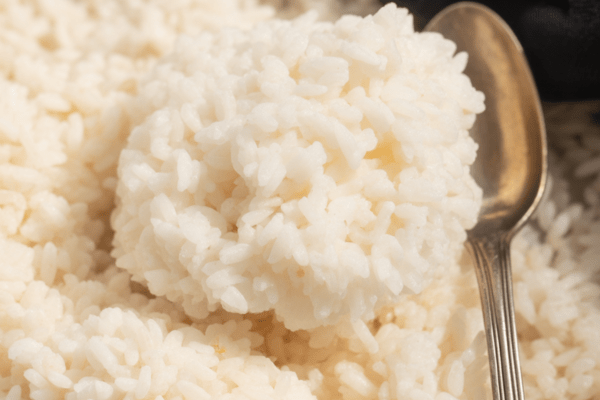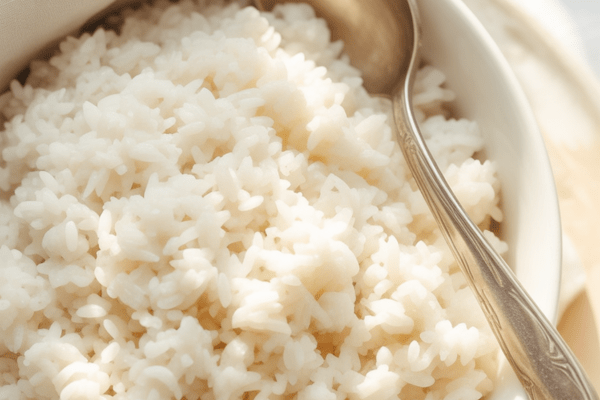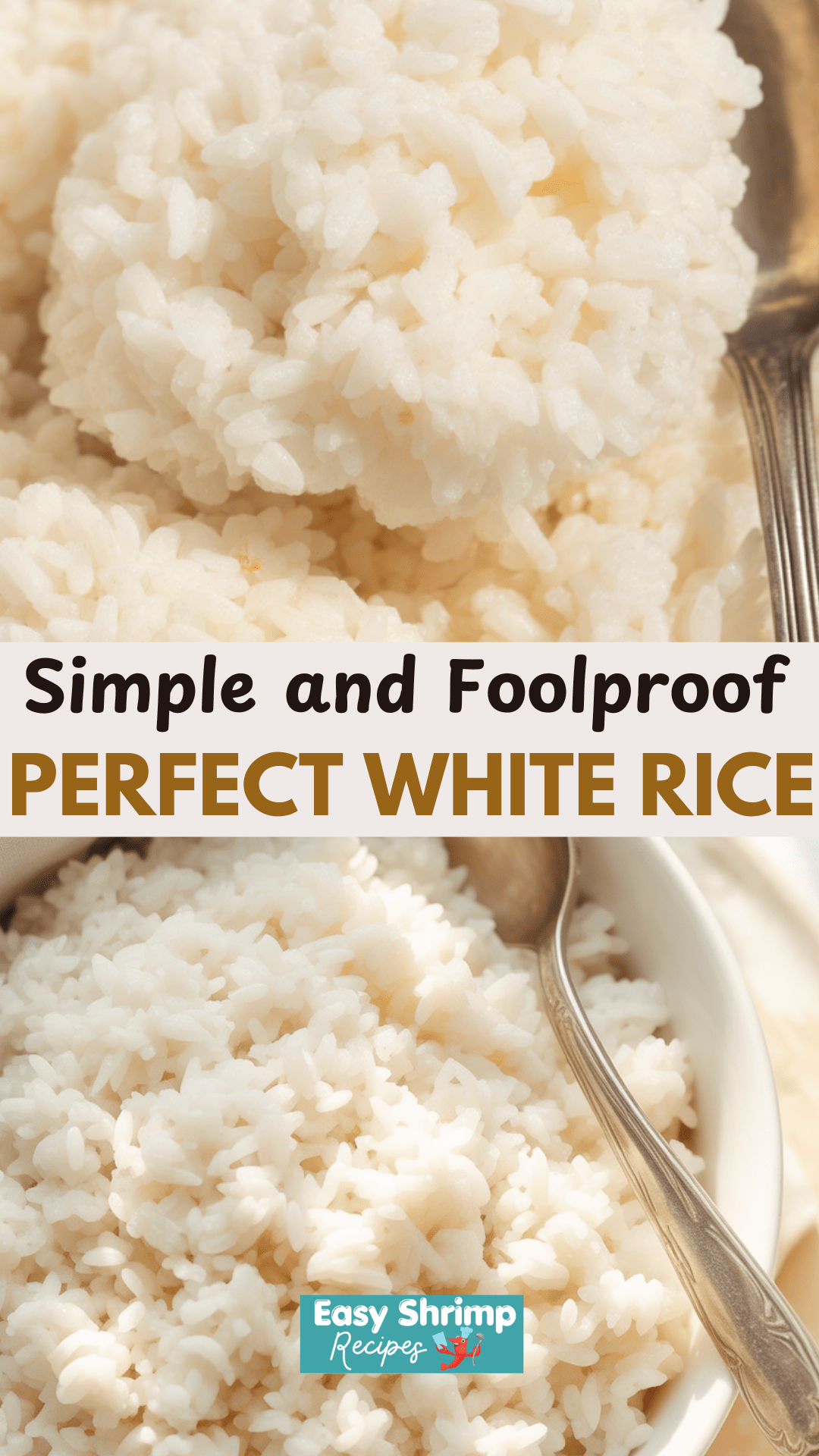I’ve made rice so many times in my kitchen that it feels like second nature now, but I remember when I used to get it wrong — mushy, crunchy, or stuck to the pot. Over the years, I found a few dead-simple ways to get fluffy, tender rice without stress. Let me share exactly how I do it at home — no rinsing, no gadgets you don’t need, just practical steps anyone can follow.

Simple Ways I Cook Rice at Home
I think everyone should have at least one reliable way to cook rice without a rice cooker. I use three main methods, depending on my mood or how busy I am:
- Stove in a pot (13 minutes cooking): My everyday method. I swear by it.
- Oven (35 minutes): Great for making big batches without fuss.
- Microwave (12 minutes): My emergency trick when I’m in a hurry or juggling too many dishes.
These approaches let me skip rinsing altogether (I’ll explain why that’s fine) and they give me consistently fluffy results.
Which Rice Works Best
This straightforward method works well for:
- Long-grain white rice
- Medium-grain white rice
- Most short-grain white rice except sushi rice
If you’re making basmati, jasmine, or brown rice, use dedicated cooking ratios — they really do behave differently. Sushi rice needs its own special treatment to get that sticky texture for rolling.
For everyday meals like curries, stir fries, or simple dal-chawal dinners, these rice types above are what I rely on.
What I Learned About Sticky vs. Fluffy Rice
I grew up thinking rice had to be perfectly separate grains, but I learned that a bit of stickiness is normal — even desirable — in many cuisines. Shorter grains are naturally stickier, which makes them easier to eat with chopsticks or scoop with flatbreads.
Long grains like basmati stay more separate and dry, which is exactly what you want for biryanis or pilafs.
Understanding this made me less stressed about my rice being “too sticky.” It’s supposed to have personality!

My Rice-to-Water Ratios
This is the part so many people overcomplicate. Here’s how I do it:
- Stove or Oven: 1 cup rice to 1.5 cups water
- Microwave: 1 cup rice to 2 cups water
If you prefer to rinse your rice for peace of mind (like I do sometimes if it’s from a local market), just reduce water by a couple of tablespoons per cup — that extra water clings to the grains.
My Go-To Stove Method for Everyday Rice
This is my standard, most-used approach. I love it because it’s consistent and easy:
- Add 1 cup rice and 1.5 cups water to a saucepan. No rinsing necessary for supermarket rice.
- Bring it to a gentle boil over medium-high. Don’t go too wild here — a rolling boil will make it foam over.
- Once it’s bubbling, reduce heat to low, cover with a tight lid, and cook for 13 minutes without peeking.
- Turn off the heat and let it rest for 10 minutes with the lid on.
- Fluff it gently with a fork or spatula.
That 10-minute rest is like magic. I can’t count how many times I was impatient and ended up with undercooked grains or wet clumps. These days, I just let it sit while I finish the rest of dinner.
Oven Method for Hands-Off Cooking
When I have guests over or need a big batch, I use the oven. I can forget about it while I prep everything else.
- Preheat to 200°C (or 180°C fan).
- Put the rice and boiling water (1 cup rice to 1.5 cups water) in a casserole dish with a lid. Using boiling water evens out the cooking.
- Cover tightly and bake for 35 minutes.
- Let it stand for 10 minutes once out of the oven.
- Fluff and serve.
A bit of the rice around the edges might get slightly crispy — I actually love those toasty bits, but if you don’t, just use a dish with a tighter seal.
Microwave Method for Busy Days
This one’s my kitchen hack for days I’m juggling too many things at once:
- Place 1 cup rice and 2 cups boiling water in a big microwave-safe round bowl (I use one at least 3–4 times taller than the water line).
- Microwave uncovered on high for 12 minutes.
- Cover and let it rest for 10 minutes.
- Fluff gently.
Is it quite as good as stovetop? Almost. Good enough that I do it all the time on weeknights when I’m in a rush. And it’s perfect for when the stove is already full of pans.
Common Mistakes I’ve Made (So You Don’t Have To)
- Too much water: That was my number-one error. Recipes often say 2 cups water per cup of rice on the stove — that makes it mushy. Stick to 1.5 cups.
- Rinsing but not adjusting water: Rinsed rice holds water. Reduce by 2 tablespoons.
- Peeking while it cooks: Don’t do it. Steam is your friend. Leave the lid on.
- Using the wrong pot: A giant pot makes the water evaporate too fast. Use one that matches the quantity.
- Skipping the resting time: I know it’s tempting, but rice finishes cooking off the heat. It’s what gives you those nice fluffy grains.
To Rinse or Not to Rinse?
I usually don’t rinse packaged rice. It’s clean, and my method works without rinsing.
I do rinse if I buy rice from an open market or want to be extra careful. I also rinse for flavored rice dishes with thick sauces that might make the rice too sticky.
If you rinse, don’t forget to reduce water a bit. Otherwise, you’ll get mush.
Fixes for Rice Troubles
- Burnt bottom: Heat was too high. Try a lower setting or use a smaller burner.
- Water left over: Let it cook a bit longer before resting. And don’t skip that rest — it soaks up extra moisture.
- Hard grains: Did you lift the lid too soon? Steam needs to stay trapped. If it’s underdone, add 1/4 cup water, simmer 5 more minutes, then rest.
- Too firm for your taste: My recipe makes rice the way I like it — a little al dente, like in most Asian restaurants. Add 2 tbsp more water next time for softer results.
My Practical Cooking Tips
- Don’t stir rice while it cooks — it’ll turn gluey.
- Use a lid that fits snugly to trap steam.
- Always let it rest for 10 minutes. That’s the key to fluffy, separate grains.
- Don’t crank the heat. A gentle boil is enough. If it’s foaming over, reduce heat next time or add a splash more water.
How I Store and Reheat Rice
I usually make extra rice — it’s a lifesaver on busy nights.
- Fridge: 4 days in an airtight container.
- Freezer: 3–4 months. I portion it in small bags or containers.
- Reheating: My trick is to sprinkle 2 teaspoons of water over a cup of rice, cover, and microwave for about a minute. The steam refreshes it beautifully.
Cold rice is perfect for fried rice recipes since the grains don’t clump as much. I often save it for that purpose.
How Much Rice Do I Need?
1 cup of uncooked rice gives me about 3 cups cooked. That feeds 3 people generously or 4 with smaller servings.
And don’t stress about measuring cups. Use any mug or bowl as long as you keep the same ratio of rice to water.

What I Love to Serve with Rice
Honestly, rice is my blank canvas for meals:
- Saucy stir fries — the rice soaks it all up
- Rich curries — perfect partner
- Fried rice dishes — from Chinese takeout style to Indonesian or Thai variations
- Hearty stews like chilli or shredded beef
- Simple rice salads or Bibimbap-style bowls
Rice goes with just about anything that has a sauce or strong flavor. It’s the ultimate team player on my dinner table.
That’s my personal guide for how I cook rice at home. Nothing fancy, just the practical, tried-and-true methods I use every week. I hope it helps you make your own dinners a little easier and a lot tastier.
Perfect White Rice

Learning how to cook rice just right can change your kitchen game—whether you're serving up stir-fry, curry, or just need a reliable side dish.
Ingredients
For the Stovetop Method
- 1 cup white rice (short, medium, or long grain)
- 1½ cups water
For the Oven Method
- 2 cups white rice
- 3 cups boiling water
For the Microwave Method
- 1 cup white rice
- 2 cups boiling water
Instructions
- Add rice and water to a medium saucepan. Place over medium-high heat and bring to a gentle simmer. Once the surface is bubbling, reduce the heat to low and cover with a tight-fitting lid.
- Let the rice cook undisturbed for 13 minutes. Don’t lift the lid or stir—just let it steam.
- After cooking, remove the pot from the heat and leave it covered for 10 minutes to finish steaming.
- Uncover and fluff the rice with a fork or rice paddle before serving..
Nutrition Information
Yield
3Serving Size
1Amount Per Serving Calories 274Total Fat 1gSaturated Fat 0gTrans Fat 0gUnsaturated Fat 0gCholesterol 0mgSodium 23mgCarbohydrates 59gFiber 1gSugar 0gProtein 6g
Easy Shrimp Recipes.com, occasionally offers nutritional information for recipes contained on this site. This information is provided as a courtesy and is an estimate only. This information comes from online calculators. Although allchickenrecipes.com attempts to provide accurate nutritional information, these figures are only estimates.

